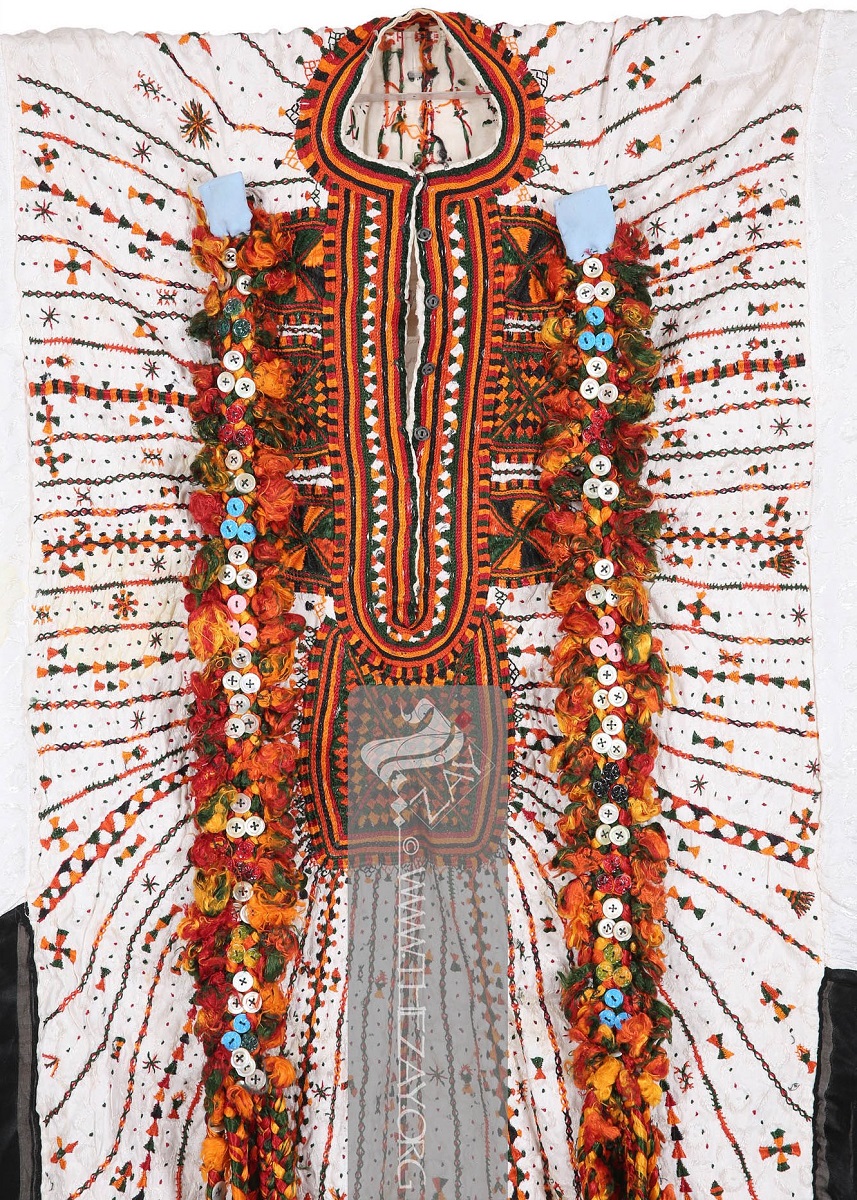





Gutan: gūṭan: (In Siwa Amazigh). Two braids are hung on the neckline of the Siwa bride's tunic dress, made of colorful silk threads, but the red color is the most prominent, and decorated with mother-of-pearl buttons, sequins, charms and horseshoes. The braids add an elegant appearance to the bride, bring her good luck, and support her desire to have children, according to ancient Siwa beliefs.
in The Zay Zay: (Arabic: costume, Pl. azyaā’), a set of clothes in a style typical of a particular country or historical period. CollectionGutan: gūṭan: (In Siwa Amazigh). Two braids are hung on the neckline of the Siwa bride's tunic dress, made of colorful silk threads, but the red color is the most prominent, and decorated with mother-of-pearl buttons, sequins, charms and horseshoes. The braids add an elegant appearance to the bride, bring her good luck, and support her desire to have children, according to ancient Siwa beliefs.
: bridal braided ropeGutan: gūṭan: (In Siwa Amazigh). Two braids are hung on the neckline of the Siwa bride's tunic dress, made of colorful silk threads, but the red color is the most prominent, and decorated with mother-of-pearl buttons, sequins, charms and horseshoes. The braids add an elegant appearance to the bride, bring her good luck, and support her desire to have children, according to ancient Siwa beliefs.
act both as symbolic protection and to emphasise the bride’s femininity and fertility.Gutan: gūṭan: (In Siwa Amazigh). Two braids are hung on the neckline of the Siwa bride's tunic dress, made of colorful silk threads, but the red color is the most prominent, and decorated with mother-of-pearl buttons, sequins, charms and horseshoes. The braids add an elegant appearance to the bride, bring her good luck, and support her desire to have children, according to ancient Siwa beliefs.
are said to be a very old and important decoration for the Siwan bride and are still worn today, as part of the comparatively modernised wedding costume, to add richness to the wedding attire.As a young Egyptophile, Siwa captured my imagination leading to my fascination with this desert culture and eventually led to me moving to Egypt in adulthood. I have always read as much as I could about Siwa and learned first-hand from the locals during my visits to the area. As the Zay Zay: (Arabic: costume, Pl. azyaā’), a set of clothes in a style typical of a particular country or historical period. Initiative’s researcher and librarian, I once again found myself reading about Siwan adornment. I obtained more information than what could fit in the limited space of the collection descriptions, thus this series on Siwa was born.